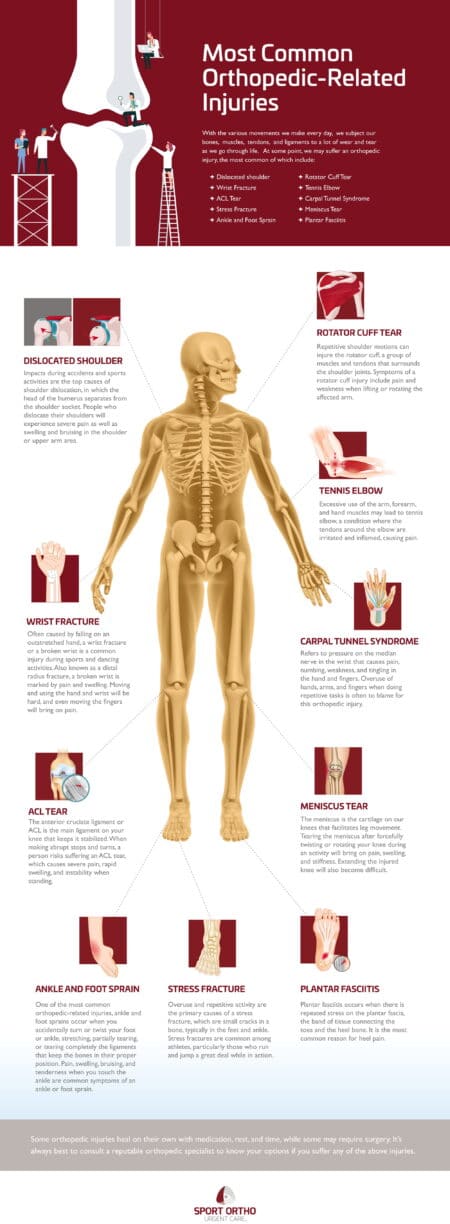You’re playing basketball or tennis, but as you’re about to shoot the ball or serve, you suddenly feel pain in your joints.
You ask yourself, “What could have caused this?” Then you realise that the pain has been there for quite some time already; you just kept ignoring it.
It’s even more painful now, so you finally decide to go and see the doctor. You’ll need to set an appointment with an orthopaedic specialist.
An orthopaedic specialist is trained to treat any injury that affects your joints, bones, or musculoskeletal system.
Most of these injuries result from trauma and accidents, like crashing into another player, losing your footing while jumping, or spraining your ankle while running. Orthopaedic-Related injuries can happen to anyone and at any time, but athletes, active, and sports-inclined individuals are more prone to getting them.
Additionally, age can also be a contributing factor for orthopedic injuries.
As you age, your bones become less dense and more brittle; therefore, they fracture or break easily. Some examples of orthopaedic injuries common in the elderly include compression fractures and broken hips.
As soon as you feel pain or notice a stress fracture, you should visit your orthopedist.
Don’t let the pain linger because the more you subject it to overuse, the more serious your injury can become. Orthopedic urgent care should be a priority in cases like this.
Likewise, it is also essential to know the most common orthopedic-related injuries so you’ll understand them better.
Here are several examples:
A dislocated shoulder is not only very painful; it also requires the help of a professional in putting back the shoulder into its original position.
A shoulder dislocation means the upper arm bone is disengaged or displaced from the shoulder socket.
An ACL tear or torn ACL (anterior cruciate ligament) is an orthopaedic injury involving the knee.
A quick turn or twist can tear the knee, and if this is not tended by a medical professional right away, it can lead to reparative surgery.
A person with a torn ACL is required to undergo physical therapy and rest.
Carpal tunnel syndrome is common among those who move their arms and hands repetitively, such as when sewing or typing.
This orthopaedic-related injury is caused by the median nerve being compressed and pinched, which leads to the hand feeling numb and weak.
People who have carpal tunnel syndrome often need medication, therapy, and in extreme cases, braces.
Stress fractures are injuries in the lower leg bones and foot. The small and thin cracks are a result of wear and tear and stress.
When there is pressure in the injured area, there is pain. Although these injuries typically heal by themselves after some time, consulting an orthopaedist is still vital.
Despite its name, a tennis elbow is not reserved for tennis players only; anybody can get this injury, especially those who tend to overuse their elbow.
It is common among carpenters, hairdressers, plumbers, and painters. The best cure for a tennis elbow is rest – and minimising elbow movement for several days.
Plantar fasciitis is another common orthopedic-related injury. It affects that area at the bottom of your foot that connects your toes to your heels.
When this area – or, more specifically, ligament – is overstretched, there will be swelling and extreme pain. If the pain and injury persist despite complete rest and medication, surgery is the most probable option.
The most familiar orthopedic-related injury is ankle and foot sprains. Sprains can be minor or serious, depending on the tear on the ligament (partial or full).
This injury requires rest, ice, compression, and elevation (or RICE) for complete healing. Severe cases often need medication and treatment.
These are just some of the common orthopaedic-related injuries.
Check out the infographic below is an infographic for a detailed illustration of each one.






